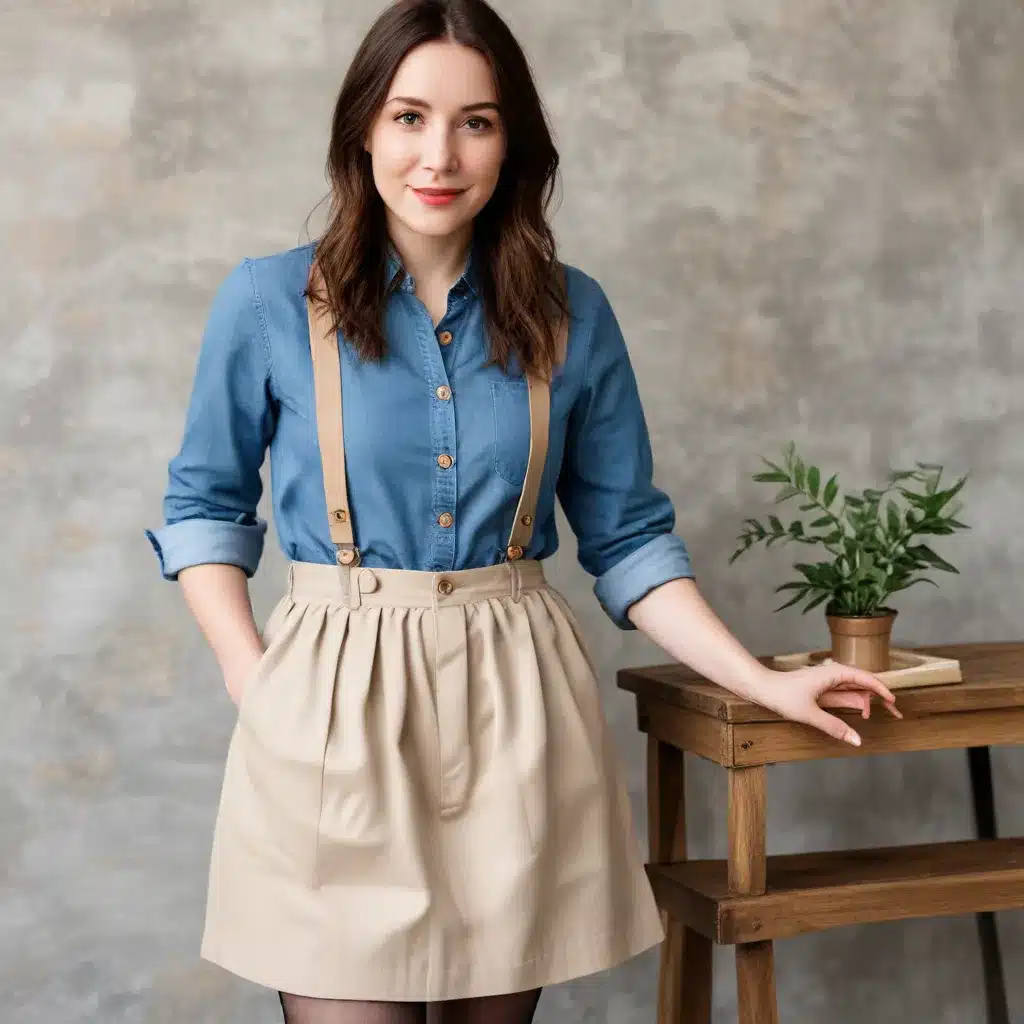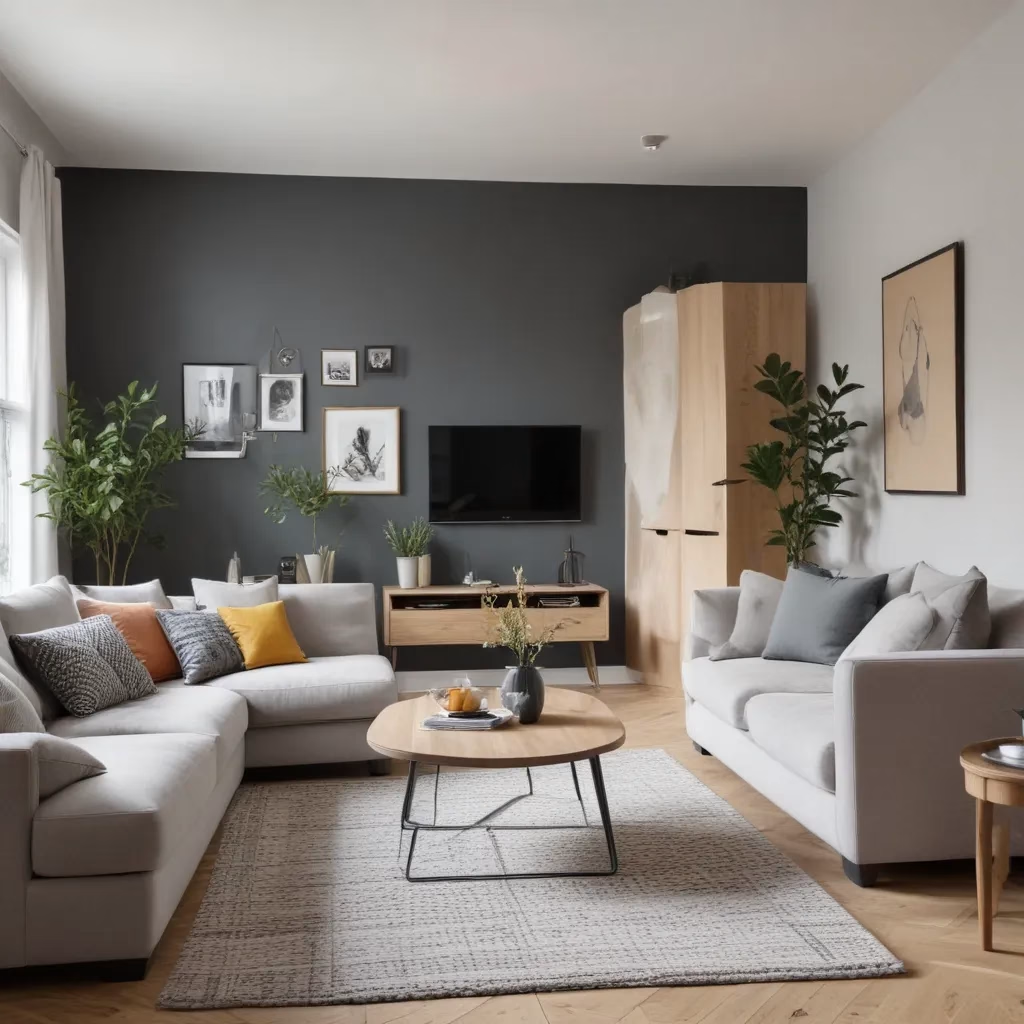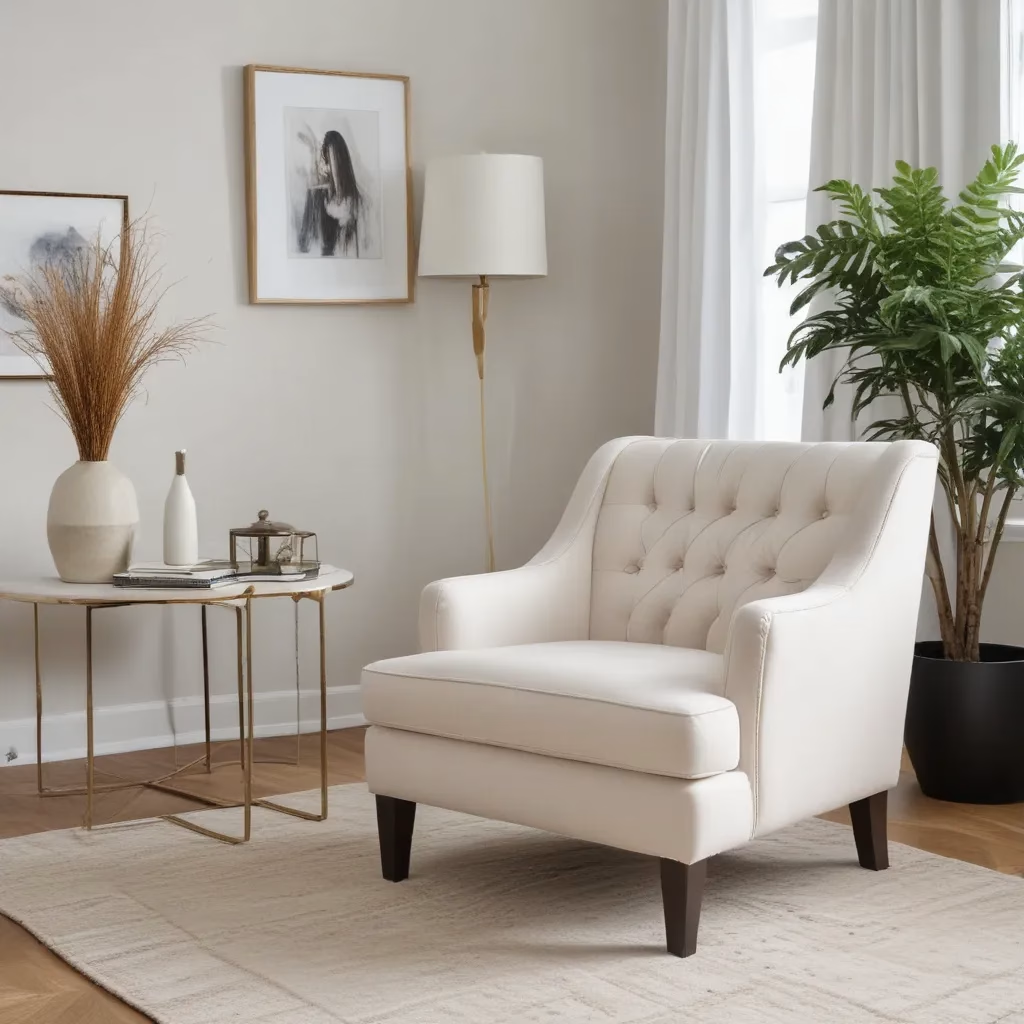
The Art of Choosing the Perfect Sofa
In the ever-evolving world of interior design, the sofa remains a cornerstone of comfort and style in British homes. As we approach September 2024, the trends in sofa selection have shifted towards a blend of functionality, aesthetics, and personalisation. Homeowners across the UK are increasingly seeking furniture that not only complements their living spaces but also reflects their individual tastes and lifestyle needs.
When selecting a sofa, it’s essential to consider various factors that contribute to both comfort and visual appeal. The size of your room, the existing decor, and your personal preferences all play crucial roles in making the right choice. A well-chosen sofa can serve as a focal point in your living room, tying together different design elements and creating a cohesive look.
One of the primary considerations when choosing a sofa is its size. UK homes come in various dimensions, from spacious country houses to compact city flats. Measuring your space accurately is the first step in ensuring your new sofa fits perfectly. Allow for adequate walking space around the furniture and consider how it will interact with other pieces in the room. A sofa that overwhelms a small space can make the room feel cramped, while one that’s too small in a large area might look out of place.
Sofa Styles: Finding Your Perfect Match
The UK market offers a wide array of sofa styles, each with its own character and appeal. From classic Chesterfields to modern modular designs, there’s something to suit every taste and interior theme. Let’s explore some of the most popular styles currently trending in British homes:
1. Traditional English Roll Arm
This timeless design features rolled arms and a comfortable, deep seat. It’s ideal for those who appreciate classic elegance and want a sofa that will stand the test of time. The English Roll Arm sofa works well in both traditional and contemporary settings, making it a versatile choice for many UK homeowners.
2. Mid-Century Modern
Characterised by clean lines, tapered legs, and minimalist design, mid-century modern sofas have seen a resurgence in popularity. This style appeals to those who favour a retro aesthetic and works particularly well in homes with a vintage or eclectic decor theme.
3. Sectional Sofas
Sectionals offer flexibility and ample seating, making them perfect for large families or those who love to entertain. These sofas can be configured in various ways to suit different room layouts and can be easily moved or rearranged as needed.
4. Tuxedo Sofas
With their boxy shape and straight arms that are the same height as the back, Tuxedo sofas add a touch of sophistication to any room. This style is particularly popular in urban apartments and modern homes across the UK.
5. Chesterfield
No discussion of British sofa styles would be complete without mentioning the Chesterfield. Known for its deep button tufting and rolled arms, this iconic design embodies luxury and tradition. It’s a favourite in both residential and commercial spaces throughout the UK.
When choosing a sofa style, consider how it will complement your existing furniture and decor. A cohesive look can be achieved by selecting a sofa that shares similar lines or design elements with other pieces in your room. Alternatively, a contrasting style can create an interesting focal point if done thoughtfully.
Material Matters: Choosing the Right Fabric
The choice of upholstery material significantly impacts both the look and longevity of your sofa. In the UK, where weather conditions can be unpredictable and lifestyles varied, selecting the right fabric is paramount. Here’s a comparison of popular sofa materials:
| Material | Durability | Maintenance | Comfort | Best For |
|---|---|---|---|---|
| Leather | High | Easy | Improves with age | Long-term investment, formal settings |
| Linen | Medium | Moderate | Cool and breathable | Casual, relaxed environments |
| Velvet | Medium-High | Moderate | Soft and luxurious | Adding texture and colour |
| Wool | High | Moderate | Warm and cosy | Year-round comfort |
| Microfibre | High | Easy | Soft and durable | Families with children or pets |
Leather sofas remain a popular choice in the UK due to their durability and ease of maintenance. They age beautifully and can withstand the wear and tear of daily use. However, for those seeking a softer touch or more varied colour options, fabric upholstery offers countless possibilities.
Linen and cotton blends are excellent choices for those who prefer a more casual, relaxed look. These natural fibres are breathable and comfortable, making them ideal for year-round use in British homes. They come in a wide range of colours and patterns, allowing for easy coordination with existing decor.
For a touch of luxury, velvet sofas have gained popularity in recent years. The rich texture and depth of colour that velvet provides can add warmth and sophistication to any room. However, it’s worth noting that velvet requires more careful maintenance to keep it looking its best.
Wool and wool-blend fabrics are particularly well-suited to the UK climate. They offer warmth in winter and breathability in summer, making them a versatile choice for British homes. Wool is also naturally resistant to staining and wear, contributing to the longevity of your sofa.
For households with children or pets, microfibre and other synthetic fabrics offer excellent durability and stain resistance. These materials are easy to clean and maintain, ensuring your sofa looks good for years to come, even in high-traffic areas.
Comfort and Support: The Inner Workings
While the exterior of a sofa is important for aesthetics, what’s inside determines its comfort and longevity. The construction and filling of a sofa play a significant role in how it feels to sit on and how well it maintains its shape over time.
Frame Construction
A solid frame is the foundation of a good sofa. In the UK, hardwood frames, particularly those made from oak or beech, are highly regarded for their durability. These woods resist warping and can withstand the pressures of daily use. Engineered wood frames can also be a good option, offering stability at a more affordable price point.
Suspension Systems
The suspension system supports the cushions and contributes to the overall comfort of the sofa. High-quality sofas often feature eight-way hand-tied springs, which provide excellent support and distribute weight evenly. Sinuous springs are another popular option, offering good support in a more streamlined design.
Cushion Filling
The filling used in sofa cushions greatly affects both comfort and maintenance requirements. Here’s a breakdown of common filling options:
-
Foam: Offers a firm seat and retains its shape well. High-density foam is more durable and comfortable than lower-density options.
-
Feather and Down: Provides a soft, luxurious feel but requires regular plumping to maintain shape.
-
Fibre: A synthetic alternative that mimics the softness of feather and down but with less maintenance.
-
Combination Fill: Many UK manufacturers use a combination of materials, such as a foam core wrapped in fibre or feathers, to balance comfort and practicality.
When testing sofas, pay attention to how the cushions feel when you sit and how quickly they regain their shape when you stand up. A well-constructed sofa should provide both immediate comfort and long-term support.
Colour and Pattern: Expressing Your Style
The colour and pattern of your sofa can dramatically influence the overall look and feel of your room. As we approach September 2024, UK interior design trends are leaning towards both bold statements and subtle, nature-inspired hues.
Colour Trends
Neutral tones continue to be popular choices for sofas in the UK, offering versatility and timeless appeal. Shades of grey, from light dove to deep charcoal, remain fashionable and pair well with a variety of decor styles. Warm beiges and soft creams are also favoured for their ability to create a cosy, inviting atmosphere.
For those looking to make a bolder statement, jewel tones such as emerald green, sapphire blue, and deep burgundy are gaining traction. These rich colours can add depth and character to a room, especially when paired with neutral walls and accessories.
Nature-inspired colours are also on the rise, reflecting a growing desire to bring the outdoors in. Soft sage greens, muted terracottas, and earthy browns are becoming increasingly popular choices for sofas in UK homes.
Patterns and Textures
While solid colours remain a safe choice, patterned sofas are making a comeback in British interiors. Subtle geometric patterns, delicate florals, and abstract designs can add visual interest to a room without overwhelming the space.
Textured fabrics are also gaining popularity, adding depth and dimension to solid-coloured sofas. Bouclé, with its nubby texture, has become a favourite for adding a touch of cosiness to modern interiors. Ribbed velvets and woven fabrics with visible textures are also trending, offering both visual and tactile appeal.
When selecting a colour or pattern for your sofa, consider the long-term impact on your space. While it’s tempting to choose based on current trends, remember that a sofa is a significant investment. Opt for a colour or pattern that you’ll be happy with for years to come, and that can adapt to changing decor styles around it.
Bespoke Solutions: Tailoring Your Sofa
As UK homeowners increasingly seek furniture that perfectly fits their space and style, bespoke sofas have grown in popularity. Custom-made sofas offer the opportunity to create a piece that’s uniquely suited to your needs, from size and shape to fabric and filling.
Benefits of Bespoke Sofas
- Perfect Fit: Ideal for unusual room layouts or specific space requirements.
- Unique Design: Allows for personal expression and one-of-a-kind pieces.
- Quality Control: Often results in higher quality as each piece is made to order.
- Material Choice: Wider selection of fabrics and fillings than off-the-shelf options.
The Bespoke Process
Creating a bespoke sofa typically involves several steps:
- Consultation: Discuss your needs, preferences, and space constraints with a designer.
- Design: Work with the designer to create a sofa that meets your specifications.
- Material Selection: Choose from a wide range of fabrics, leathers, and fillings.
- Construction: Skilled craftspeople build your sofa to the agreed specifications.
- Delivery and Installation: The finished piece is carefully delivered and placed in your home.
While bespoke sofas often come with a higher price tag, many UK homeowners find the investment worthwhile for the perfect piece of furniture. The ability to create a sofa that fits precisely in your space and matches your exact specifications can result in a more satisfying and long-lasting purchase.
Sustainable Choices: Eco-Friendly Sofa Options
Sustainability has become an increasingly important factor for UK consumers when choosing furniture. As awareness of environmental issues grows, many are seeking sofas that not only look good and feel comfortable but also have a reduced environmental impact.
Sustainable Materials
-
Recycled Fabrics: Some manufacturers are using fabrics made from recycled plastics or other materials, reducing waste and resource consumption.
-
Natural Fibres: Organic cotton, hemp, and other natural fibres are renewable and biodegradable options for upholstery.
-
Sustainable Wood: Look for sofas with frames made from FSC-certified wood, ensuring the timber comes from responsibly managed forests.
-
Low-VOC Foams: Some manufacturers are now using plant-based or low-VOC (Volatile Organic Compound) foams, which are better for indoor air quality and the environment.
Durable Design
Choosing a well-made, durable sofa is itself a sustainable choice. A sofa that lasts for many years reduces the need for replacement and the associated environmental impact of manufacturing and disposal.
Local Production
Opting for sofas made in the UK can reduce the carbon footprint associated with transportation. Many British manufacturers pride themselves on local production and craftsmanship.
End-of-Life Considerations
Some forward-thinking companies are now designing sofas with eventual recycling or biodegradability in mind. Look for sofas with easily separable components or those made from materials that can be recycled or composted at the end of their life.
Care and Maintenance: Keeping Your Sofa Looking Its Best
Proper care and maintenance are essential for ensuring your sofa remains comfortable and attractive for years to come. Here are some tips for maintaining different types of sofas:
Fabric Sofas
- Vacuum regularly to remove dust and debris.
- Treat spills immediately by blotting (not rubbing) with a clean, damp cloth.
- Use fabric protector sprays to guard against stains.
- Follow manufacturer’s instructions for cleaning specific types of fabric.
Leather Sofas
- Dust and vacuum regularly.
- Clean with a slightly damp cloth and dry immediately.
- Use a leather conditioner every 6-12 months to keep the leather supple.
- Avoid placing leather sofas in direct sunlight to prevent fading and drying.
Velvet Sofas
- Use a soft brush attachment when vacuuming to avoid damaging the pile.
- For spills, blot immediately and use a specialised velvet cleaning solution if necessary.
- Regularly use a velvet brush to maintain the direction of the pile.
General Maintenance Tips
- Rotate cushions regularly to ensure even wear.
- Use arm covers or throws on high-use areas to protect from wear and tear.
- Keep sofas away from direct heat sources and sunlight to prevent fading and material damage.
- Address any structural issues, such as loose legs or squeaky springs, promptly to prevent further damage.
By following these care instructions, you can significantly extend the life of your sofa and keep it looking its best for years to come.
Making Your Decision: Practical Considerations
When it’s time to make your final decision on a sofa, there are several practical factors to consider beyond style and comfort:
Budget
Set a realistic budget that takes into account the long-term value of your purchase. While it can be tempting to opt for a cheaper option, investing in a high-quality sofa often pays off in terms of comfort and longevity.
Delivery and Access
Ensure that your chosen sofa can be delivered to your home and will fit through doorways and staircases. Many UK retailers offer delivery and installation services, which can be particularly helpful for larger or more complex pieces.
Warranty and Returns
Check the warranty terms and returns policy. A good warranty can provide peace of mind, especially for more expensive purchases. Understand the conditions under which you can return or exchange the sofa if it doesn’t meet your expectations.
Try Before You Buy
Whenever possible, visit a showroom to test sofas in person. Sit, lie down, and spend time on the sofa to get a true feel for its comfort and quality. Many UK furniture retailers have extensive showrooms where you can try out different styles and materials.
Future-Proofing
Consider how your needs might change in the future. A modular sofa that can be reconfigured or expanded might be a good choice if you anticipate changes in your living situation or family size.
Conclusion: Your Perfect Sofa Awaits
Choosing the right sofa is a significant decision that impacts both the comfort and style of your home. By considering factors such as style, material, construction, and sustainability, you can find a sofa that not only looks great but also meets your practical needs and aligns with your values.
Remember that the perfect sofa is one that you’ll love coming home to day after day. Whether you opt for a classic design or a contemporary piece, prioritise quality and comfort to ensure your investment stands the test of time.
As you embark on your sofa-buying journey, consider visiting Sofa Spectacular for a wide range of options that cater to various tastes and needs. With careful consideration and the right information, you’re sure to find a sofa that will be the centrepiece of your living space for years to come.



